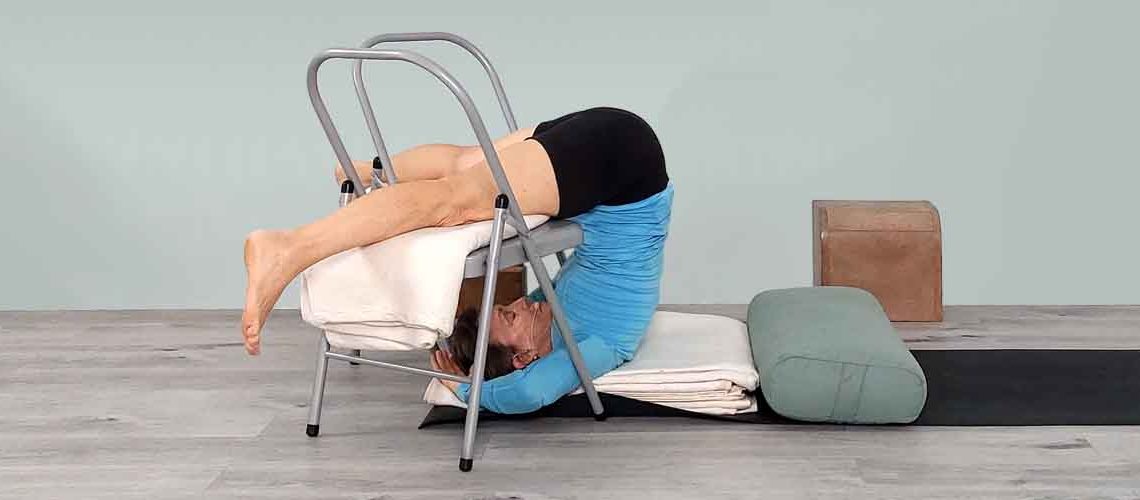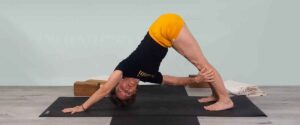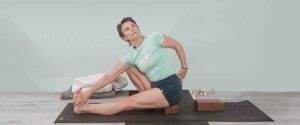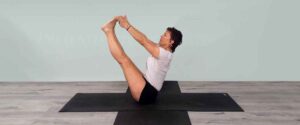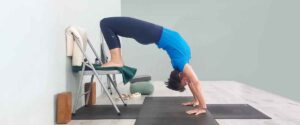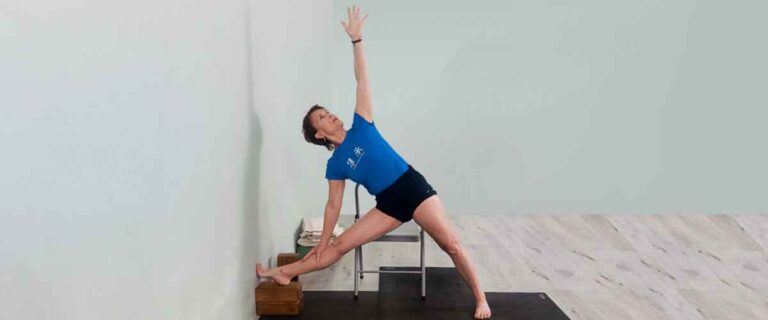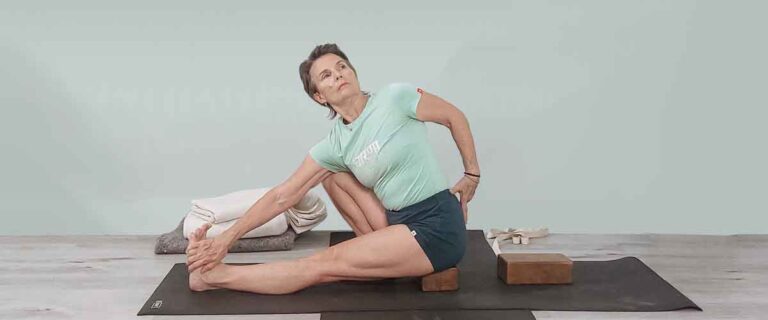Releasing tension in the groin can have several benefits for the pelvis and low back.
There are multiple ways to release tension in the groin area. First, it is important to understand that there is a front and back groin. When the space in the groin is tight, it pulls the lower back towards the pelvis. In this case, the groin where the leg connects to the pelvis is overly tight and gripping.
In the various positions in this session, I address the actions needed to activate the front and back thigh, creating space in the groin and finding a balance between the front and back thigh. This helps to open the pelvis and create more space and length where needed.
By the end of the savasana, observe the difference in your body and mind. Namaste.
In Yoga Sutra 2.46, “sthira sukham asanam” is defined as “the posture for meditation should be steady, stable, and comfortable.”
These postures, especially when sitting, contribute to physical and mental stability, as well as a sense of well-being.
Join me and engage your breath to elongate and soften.
Releasing tension in the groin can have several benefits for the pelvis and low back. Here are some potential benefits:
- Improved Flexibility and Range of Motion: Stretching and releasing tension in the groin area can enhance the flexibility of the muscles and connective tissues around the pelvis. This increased flexibility contributes to a broader range of motion, which can positively impact daily activities and movement patterns.
- Pelvic Alignment: Tension in the groin can sometimes contribute to misalignment in the pelvis. By addressing this tension, you may help restore proper alignment, reducing the risk of discomfort or pain in the pelvic region.
- Relief from Low Back Pain: The connection between the groin, pelvis, and low back means that tension in the groin can affect the alignment and function of the lower spine. Releasing this tension may provide relief for individuals experiencing low back pain by promoting better posture and reducing strain on the lumbar region.
- Enhanced Circulation: Stretching and releasing tension in the groin can improve blood circulation in the pelvic area. Improved blood flow helps nourish the muscles and tissues, promoting overall health and potentially reducing stiffness and discomfort.
- Mind-Body Connection: Incorporating breath work and mindfulness into the practice, as you suggested, not only aids in physical relaxation but also fosters a mind-body connection. This can lead to a greater awareness of how tension is held in the body and help individuals consciously release and relax those areas.
- Stress Reduction: Engaging in a practice focused on releasing tension promotes relaxation, which can have a positive impact on stress levels. Stress often manifests physically in the body, and addressing tension in the groin is a holistic approach to relieving both physical and mental stress.
- Postural Awareness: The practice of balancing the front and back thighs and creating space in the pelvis encourages increased awareness of body alignment and posture. This heightened awareness can translate into improved posture in everyday activities.
Incorporating these practices into a routine can contribute to a more balanced and harmonious state of being, both physically and mentally. It’s essential to listen to your body and practice mindfully, adjusting the intensity and duration as needed according to your body. Use the props needed create softness whist helping to relax in the posture.
Yoga is “meditation in action”.
B.K.S. Iyengar
This sequence includes:
Baddha Konasana Variations
Upa Vista Konasana
Supported Halasana – Chair
Supta Baddha Konasana
Setu Bandha on platform
Svanasana on Bloster

